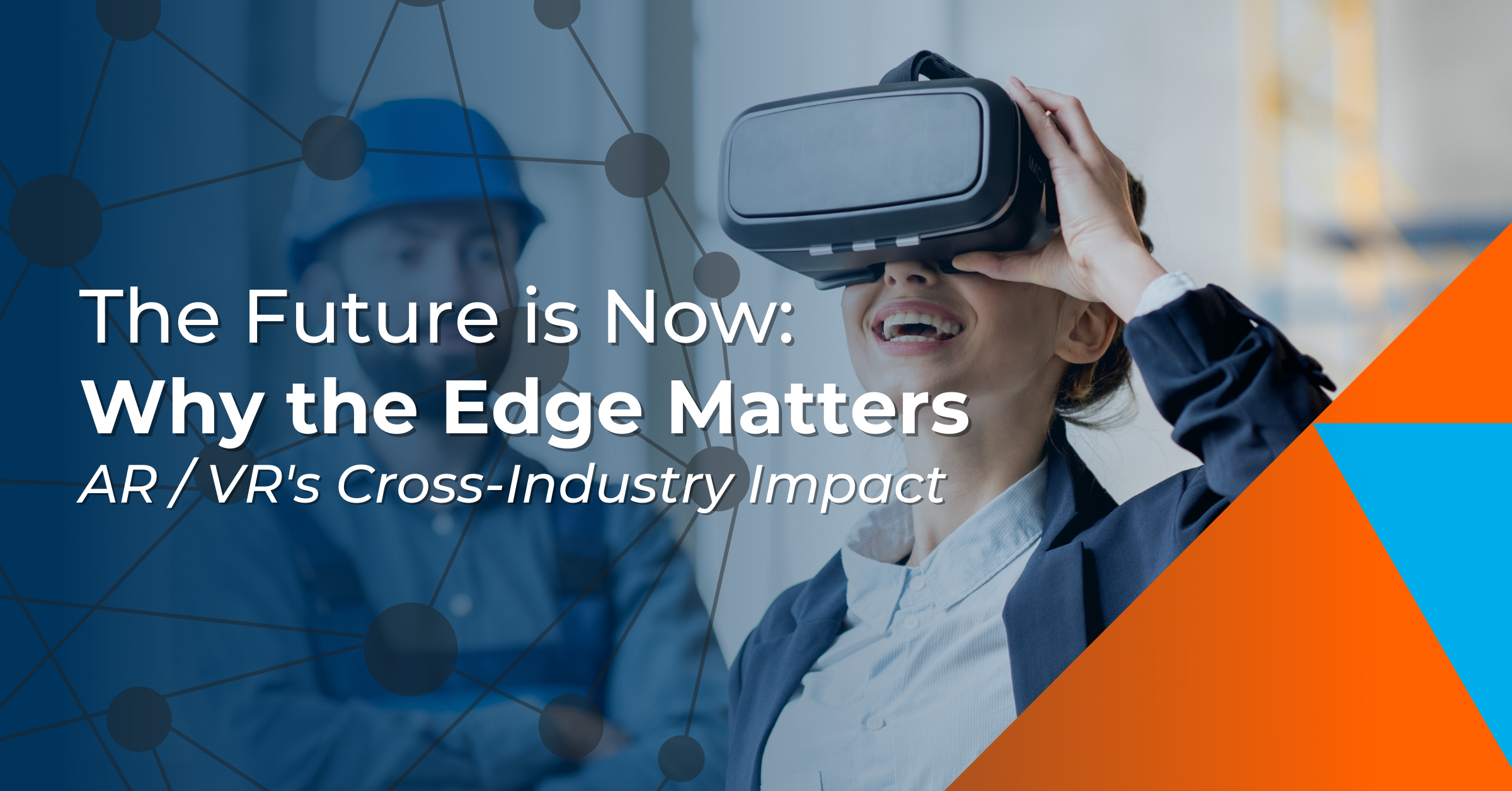Whether it’s to connect or educate people, deliver pure enjoyment or life-saving services, virtual and augmented reality have taken center stage during the pandemic. While AR and VR are different, both offer immense benefits to every industry.
Companies around the world are embracing both AR and VR technologies to deliver the same, or better, user experiences in the absence of in-person services. Here are some of the industries learning to maximize the benefits of augmented and virtual reality — when they have access to the low latency and capacity that edge computing and data centers like 1623 Farnam provide.
Healthcare: An analysis from MarketsandMarkets predicted an annual AR/VR investment growth rate in the health sector of 30.7% from 2017 to 2025. As an example use case, through VR, doctors can virtually practice operations, and patients can see what their upcoming operational procedure will look like. Over the coming decades, AR and VR will ensure doctors and patients alike are better prepared for what is coming next.
Education: AR and VR allow students to thoroughly interact with and be engaged by their assignments in a way they never have before. Students can see a full-sized rendering of any building in the world and how it was made, or watch an animal close-up and take notes on its mannerisms. Additionally augmented and virtual reality allow universities and post-graduate institutions to keep their enrollment numbers up during the pandemic. While students and their parents can’t travel to tour the schools themselves, AR/VR delivers the next best thing by allowing them to tour the facility virtually.
Travel and tourism: While cross-border travel has not been possible during the pandemic, AR/VR technology enables people to experience new countries, cities, museums and restaurants from wherever they are. Many countries and destinations are capitalizing on this opportunity. For example, the German National Tourist Board (GNTB) takes viewers on trips across the country — as well as to parts of its Baltic and North Sea coasts — with the use of a VR headset.
Retail: Retailers accelerated the use of AR and VR to allow consumers to “try things on” virtually before purchasing during the pandemic. In May of 2020, retailer Kohl’s collaborated with Snapchat to create Kohl’s AR Virtual Closet. Using a smartphone and the Snapchat app, consumers can step inside an AR dressing room, mix and match items, and make a purchase without ever leaving the app (or their home). In fact, Shopify data showed that products having AR content had a 94% higher conversion rate than products without AR.
Automotive: According to TechCrunch, the automotive sector currently uses virtual reality so buyers can experience a vehicle’s technology and features without actually going to the dealership. This being said, some automotive innovators are experimenting with using VR and AR to improve the actual in-car experience. Audi spinoff Holoride is working to offer passengers VR experiences that can help cut down on in-car motion sickness while simultaneously offering gaming, entertainment or business applications. Also, ride-hailing companies are getting in on the AR and VR game, with Lyft and Uber exploring AR and VR options for riders.
Gaming: According to USA Today, two thirds of Americans, 227 million, have taken up gaming as an escape or source of stress relief over the past year. Online gaming has significantly increased tech giants’ technology requirements, such that they are turning to edge data centers like 1623 Farnam to colocate their digital assets and solve their latency issues.
Real Estate: This past year, in-person house-hunting was limited, causing real estate innovators to turn to AR and VR to provide the next best thing. Through AR and VR, potential buyers can visit the inside of homes in their current state, as well as explore what potential renovations might look like, so potential tenants are apt to buy and spend more.
The Uniting Factor for AR/VR
Every industry stands to benefit from augmented and virtual reality, as it gives every user and purchaser the opportunity to try on, experience or learn more about crucial day-to-day activities and improve results.
However, companies can only embrace these revenue-generating opportunities with the right networking and data infrastructure. In short, the AR/VR experience is only possible through edge computing and edge data centers. AR and VR technologies rely on maximized speed and minimized latency that only edge data centers like 1623 Farnam can provide.
By partnering with 1623 Farnam, data transfer, processing and storage happen as close to the end user as possible to cut down on lag, jitter and other experientially damaging results from added latency. This makes for a top-tier AR and VR experience so clients, customers and users keep coming back for more. That’s an automatic and repetitive addition to any organization’s bottom line.
To learn more about AR/VR, check out our FAQ page.
If you know you’re ready to embrace AR/VR and want to discuss your colocation and connectivity requirements or to learn more about our interconnected edge data center, please contact us.


